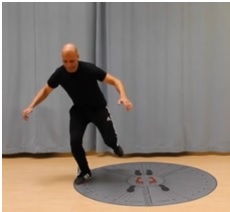Perhaps the studies on the effectiveness of various modalities and manual therapies for plantar heel pain (PHP) are inconsistent as there may be non-mechanical factors at play. We all appreciate the significance of psychosocial factors when it comes to persistent low back and neck pain, but could psychosocial factors contribute to localized heel pain? You bet!
After adjusting for age, sex, BMI, and education, patients with PHP were found to have greater levels of depression, anxiety, and stress.1
Here is a quote from a 2018 systematic review, “There may be an association between depression, anxiety, stress and catastrophization and PHP pain.” 2 Although we now have evidence that certain psychosocial factors may be involved in persistent PHP, we do not yet have any studies supporting any specific psychosocial interventions.
I can certainly say that I address fear and catastrophization in all my patients with persistent pain, irrespective of the location of symptoms.
Usually on day one I get my patients with PHP to do small loading exercises that is unlikely to flare them up, such as clock jumps and hops using the STARmat. Although most are fearful of jumping and hoping activities, they are usually pleasantly surprised when their symptoms are not aggravated.

The more I get them to move and the more I load their foot without flaring up, the less fear, anxiety and catastrophization they associate with their condition. This approach works for me better than any modality.
I recently helped a patient who had been suffering from severe plantar heel pain for almost 2 years with this approach. She had attempted numerous treatments which had all failed. Appreciating the fact that my manual therapy and exercise prescription skills do not surpass the other physios who had already tried to help her, I took a completely different approach.
We focused our attention away from fixing any foot structures. I got her to wear normal shoes and get rid of her orthotics that were not helping her. We focused on pain education, fear reduction and graded loading. After 2 months, she dramatically improved without me even touching her or using a single modality. She still had some pain, but she admitted that she “no longer suffered and had gotten her life back”. The Pain Truth e-book is available complimentary on-line in English, French and Chinese.
1.Cotchett M et al Depression, Anxiety, and Stress in People With and Without Plantar Heel Pain. Foot Ankle Int. 2016 Aug;37(8):816-21.
2.Drake C Psychosocial variables and presence, severity and prognosis of plantar heel pain: A systematic review of cross-sectional and prognostic associations. Musculoskeletal Care. 2018 Sep;16(3):329-338.

